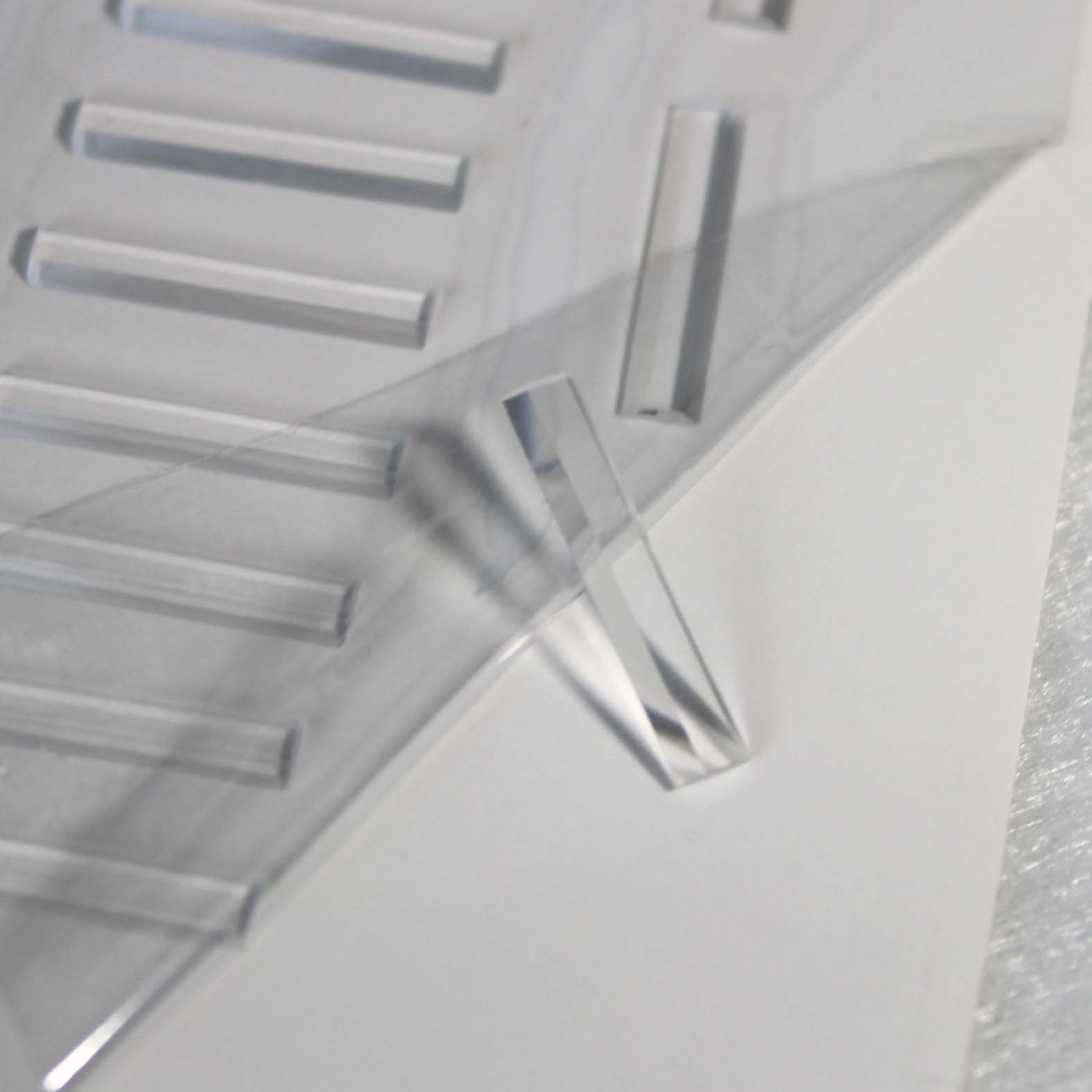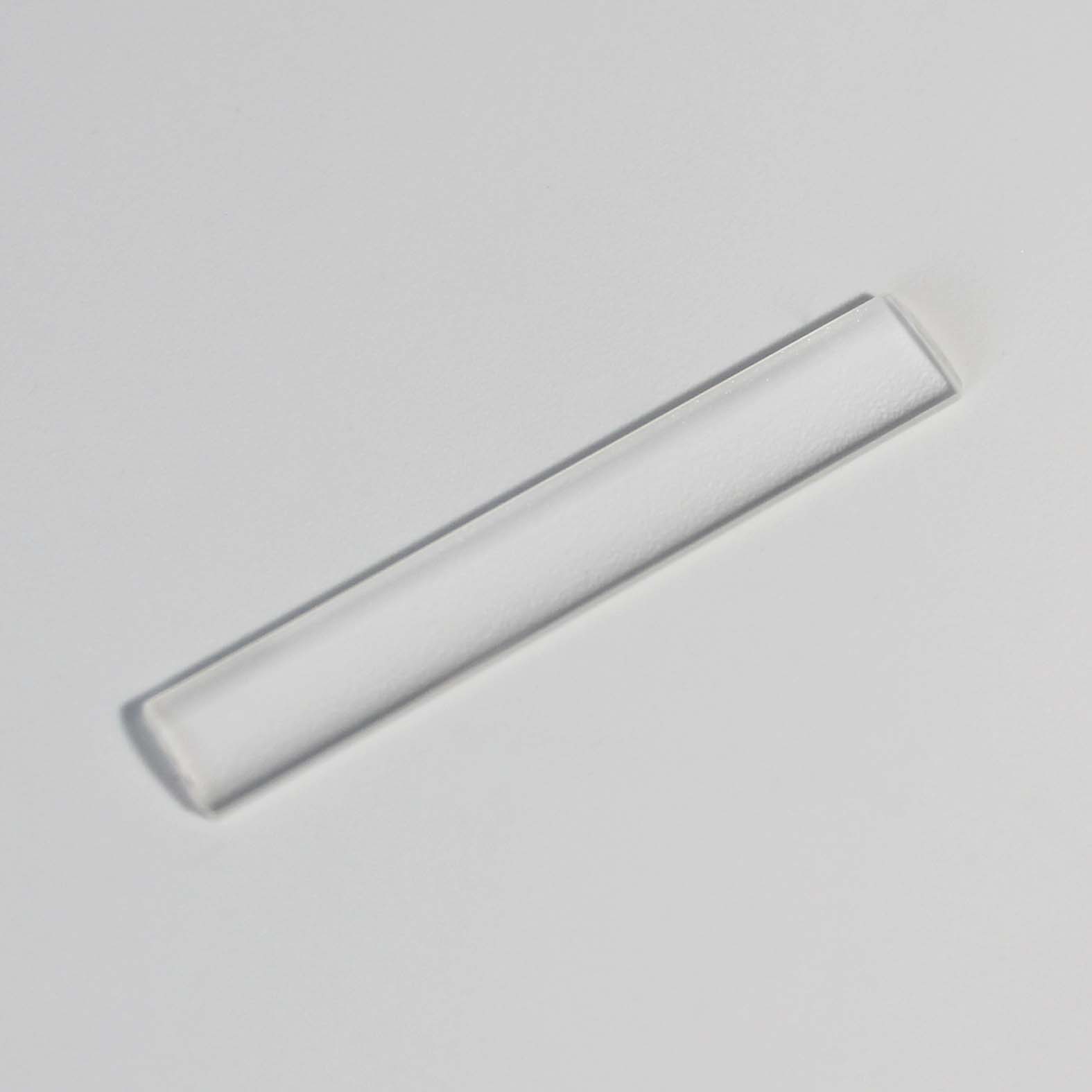
H-K9L Digital Camcorders CCD Projectors Optical Custom Processing Dove Prism
H-K9L Digital Camcorders CCD Projectors Optical Custom Processing Dove Prism
Item No: X-P22P3M0201
A Dove Prism is an optical prism that can be used to rotate, retroflect, or invert an image. It is shaped like a triangular right-angle prism with the top cut off, or truncated.These prisms work best with collimated light. The length of these prisms (approximately four times the height) means they will introduce substantial astigmatism when they are used with converging light.If light enters through a sloped face and is propagated along the longitudinal axis of the prism it reflects once from the bottom face and emerges from the other short side, resulting in an inverted image. There is one interesting and unique feature of dove prisms: If you rotate the prism around the longitudinal axis the image will rotate at twice the speed. Rotate the prism 30 degrees, and your image will rotate by 60.
- Material: K9 glass, JGS1 glass, JGS2, JGS3, sapphire, ZnSe etc.
- Dimension: 0.50mm- 200mm
- Surface Accuracy: 40/20
- Size Tolerance: +/-0.01mm
- Angle Tolerance: +/-30 min
- Coating: Optional
Quote Now
** Definiation of Dove prism
Dove prism is a type of reflective prism which is used to invert an image. Dove prisms are shaped from a truncated right-angle prism.
A beam of light travelling parallel to the longitudinal axis, entering one of the sloped faces of the prism undergoes total internal reflection from the inside of the longest (bottom) face and emerges from the opposite sloped face. Images passing through the prism are flipped (mirrored), and because only one reflection takes place, the image is also inverted but not laterally transposed.
Refraction at the entrance and exit surfaces results in substantial image astigmatism when used in convergent light. Thus the Dove prism is used almost exclusively for images appearing at infinity.
If the flat hypotenuse surface of a Dove prism is cut into a roof shape, the result is an Amici roof prism.
Rotating prisms have an unusual and very interesting characteristic — if you look through the prism and rotate it around a longitudinal axis, the image rotates through twice the angle through which the dove prism itself rotates. For optimal peformance, use dove prisms with collimated light.
Eg. The path of a beam through a Dove prism/ inverting prism

** Specifications for Dove Prisms
The longest bottom face of the prisms typically feature an unbeveled sharp edge, while the top surface is ground. Our dove prisms are manufactured from high quality BK7 Grade A optical glass, Corning Fused Silica 7980, JGS1 UV grade fused silica, and JGS2.
The dimension tolerance of a prism is defined as the acceptable variation of ranges in dimension. Our factory standard is a dimension tolerance of +/- 0.1 mm, and we can provide tighter tolerances if requested.
The angle tolerance of our prisms is typically less than 5 arc minutes. This is defined as the amount of allowable variations in angles.
Flatness of a prism is defined as the deviation of each of the surfaces from an ideal flat surface. The factory standard for our dove prisms is l/4l at 632.8 nm.
Our factory standard for surface quality is 60-40 scratch and dig, which guarantees a highly polished surface. A scratch is defined as any marking or tearing of the glass surface. Digs are small rough spots on the glass surface, similar to pits. Bubbles in glass are considered digs.
A surface quality rating of 60/40 scratch dig means that there are no digs with a diameter of larger than 0.04 mm or 0.0016 inch, and that all scratches have a brightness level of of less than 60 and, laid end to end, are no longer than ¼ the diameter of a circle with an area equal to the surface area.
** Rotation of Dove Prisms
A reflection in one axis of a plane is always equivalent to a reflection and rotation in two other axes (with the angle between the source and image being twice the angle between the source and reflection axis of the prism).
** Application of Dove Prism
Dove prisms can be used to create beam rotators, which have applications in fields such as astronomy, interferometry, and pattern recognition. They are used as image rotators for a variety of opto-mechanical systems. This type of prism was invented by Heinrich Wilhelm Dove, (1803-1878), a Prussian meteorologist and physicist.
VY Optoelectronics Co.,Ltd. can produce all types of glass prism lenses, the coating or painting may be available by custom orders.
ANYTHING YOU COULDN’T FIND?
Talk With Our Sales
Vyoptics dedicated to being the supplier you choose for your custom optic fabrication. From volume production to prototype, we will meet any require specifications at the most cost effective solution.
- Free quotes and design consultations
- Comprehensive brochure you can download
- Worry-free returns
- Lightning Delivery
- OEM&ODM
- Fast Respond Or enthusiasm
- Rapid Production
- Low MQQ
SEND US AN EMAIL
Contact Us
Welcome to discuss your purchasing requirements with our customer service.









